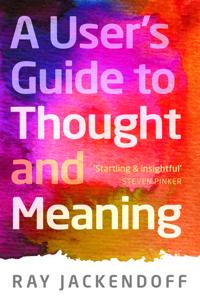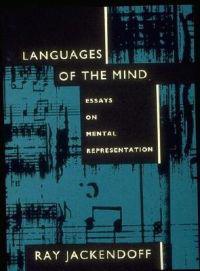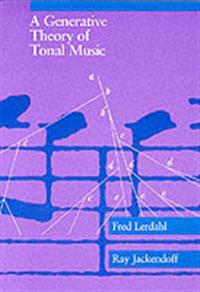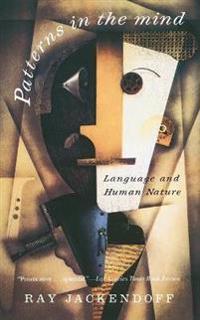A User's Guide to Thought and Meaning (Pocket)
avRay Jackendoff
ISBN: 9780198736455 - UTGIVEN: 2015-06A User's Guide to Thought and Meaning presents a profound and arresting integration of the faculties of the mind - of how we think, speak, and see the world. Ray Jackendoff starts out by looking at languages and what the meanings of words and sentences actually do. He shows that meanings are more a[...]
Foundations of Language (Häftad)
avRay Jackendoff
ISBN: 9780199264377 - UTGIVEN: 200309How does human language work? How do we put ideas into words that others can understand? Can linguistics shed light on the way the brain operates? "Foundations of Language" puts linguistics back at the centre of the search to understand human consciousness. Ray Jackendoff begins by surveying the dev[...]
A User's Guide To Thought And Meaning (Inbunden)
avRay Jackendoff
ISBN: 9780199693207 - UTGIVEN: 2012-02-23A profoundly arresting integration of the faculties of the mind - of how we think, speak, and see the world. Written with an informality that belies the originality of its insights and the radical nature of its conclusions this is the author's most important book since his groundbreaking Foundations[...]
Languages of the Mind (Pocket)
avRay Jackendoff
ISBN: 9780262600248 - UTGIVEN: 1995-09Over the past two decades, Ray Jackendoff has persistently tackled difficult issues in the theory of mind and related theories of cognitive processing. Chief among his contributions is a formal theory that elaborates the nature of language and its relationship to a broad set of other domains. Langu[...]
Architecture of the Language Faculty, The (Övrig)
avRay Jackendoff
ISBN: 9780262600255 - UTGIVEN: 1997-03-03Over the past twenty-five years, Ray Jackendoff has investigated many complex issues in syntax, semantics, and the relation of language to other cognitive domains. He steps back in this new book to survey the broader theoretical landscape in linguistics, in an attempt to identify some of the sources[...]
A Generative Theory of Tonal Music (Häftad)
avFred Lerdahl, Ray Jackendoff
ISBN: 9780262621076 - UTGIVEN: 199607This work, which has become a classic in music theory since its publication in 1983, models music understanding from the perspective of cognitive science. The point of departure is a search for a grammar of music with the aid of generative linguistics. The theory, which is illustrated with numerous [...]
Patterns in the Mind (Häftad)
avRay Jackendoff
ISBN: 9780465054626 - UTGIVEN: 199412What is it about the human mind that accounts for the fact that we can speak and understand a language? Why cant other creatures do the same? And what does this tell us about the rest of human abilities? Recent dramatic discoveries in linguistics and psychology provide intriguing answers to these a[...]
Dry Ports - A Global Perspective (Inbunden)
avFred Lerdahl, Ray Jackendoff
ISBN: 9781409444244 - UTGIVEN: 201304As centres for logistics activities, seaports have traditionally been the focus of maritime logistics chains. However, changes in production patterns, supported by the development of rapid transport of goods over long distances, have altered the logistics landscape. As a result, the relevance of por[...]
Language, Consciousness, Culture: Essays on Mental Structure (Övrig)
avRay S. Jackendoff
ISBN: 9780262101196 - UTGIVEN: 2007-08-24Ray Jackendoff's Language, Consciousness, Culture represents a breakthrough in developing an integrated theory of human cognition. It will be of interest to a broad spectrum of cognitive scientists, including linguists, philosophers, psycholinguists, neuroscientists, cognitive anthropologists, and [...]
Language, Consciousness, Culture (Pocket)
avRay S. Jackendoff
ISBN: 9780262512534 - UTGIVEN: 2009-02-13Developing an integrated theory of human cognition, this title is of interest to a broad spectrum of cognitive scientists. It argues that linguistics has become isolated from the other cognitive sciences at least partly because of the syntax-based architecture assumed by mainstream generative gramma[...]
Semantics and Cognition (Övrig)
avRay S. Jackendoff
ISBN: 9780262600132 - UTGIVEN: 1985-01-01This book emphasizes the role of semantics as a bridge between the theory of language and the theories of other cognitive capacities such as visual perception and motor control. It develops the position that the study of semantics of natural language is the study of the structure of thought, and tha[...]
Semantic Structures (Övrig)
avRay S. Jackendoff
ISBN: 9780262600200 - UTGIVEN: 1992-06-01Semantic Structures is a large-scale study of conceptual structure and its lexical and syntactic expression in English that builds on the system of Conceptual Semantics described in Ray Jackendoff's earlier books Semantics and Cognition and Consciousness and the Computational Mind.Jackendoff summari[...]














